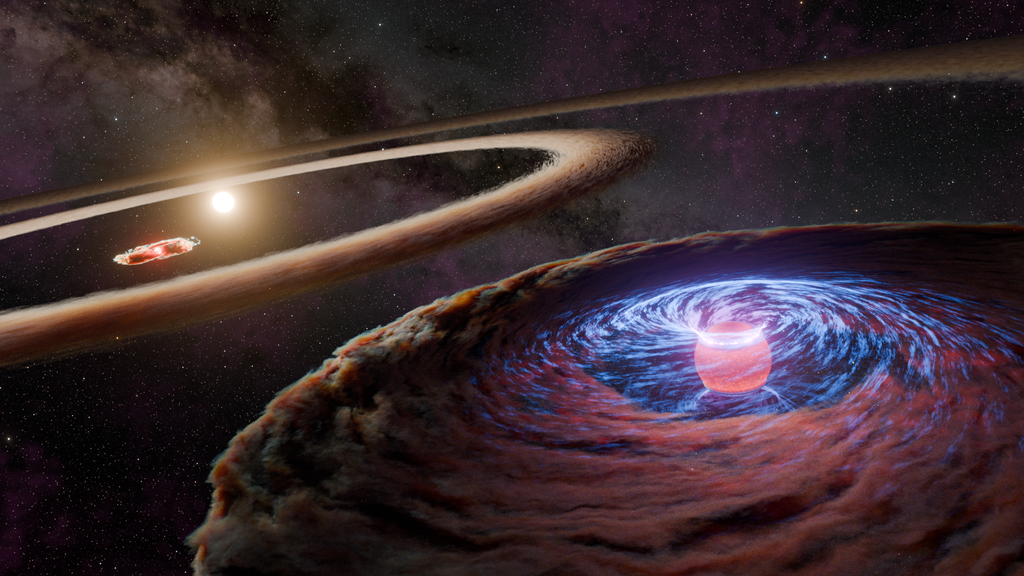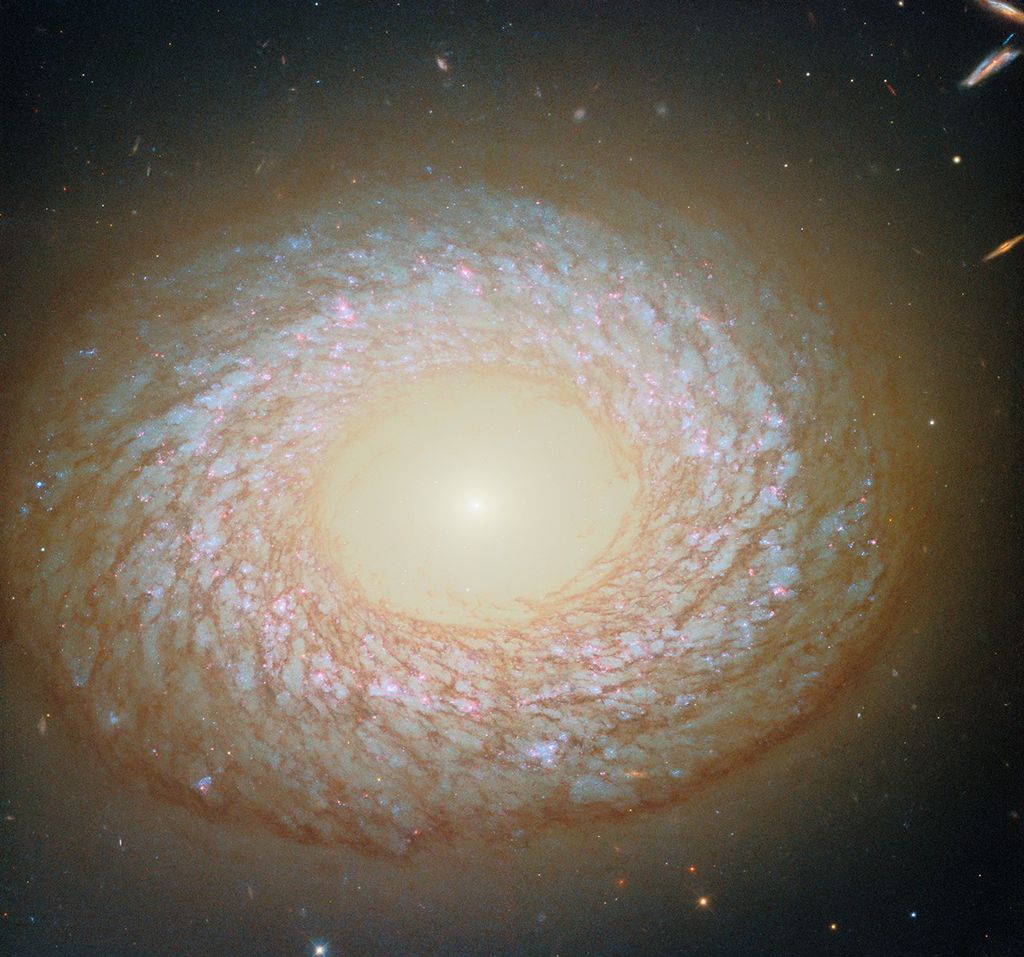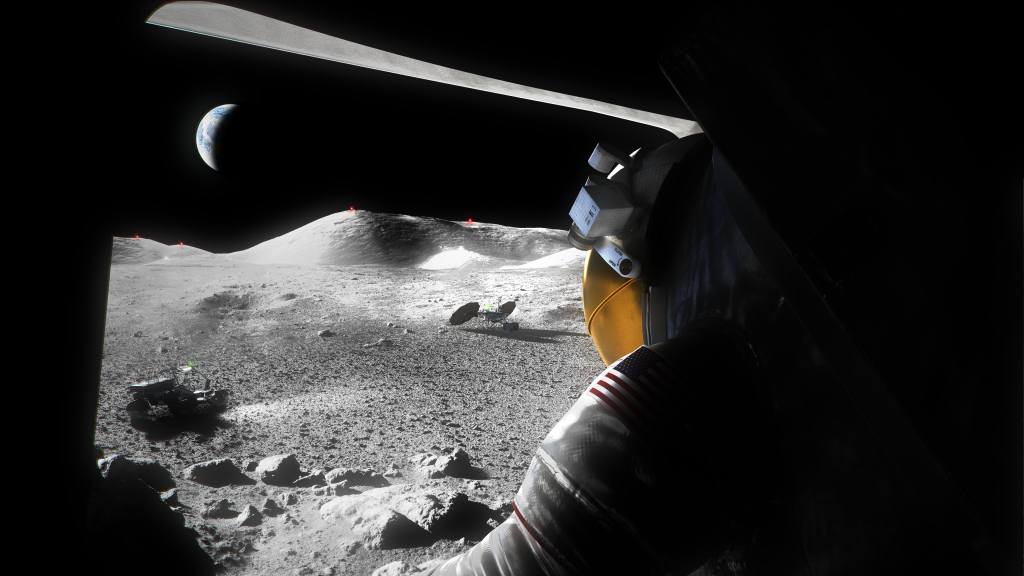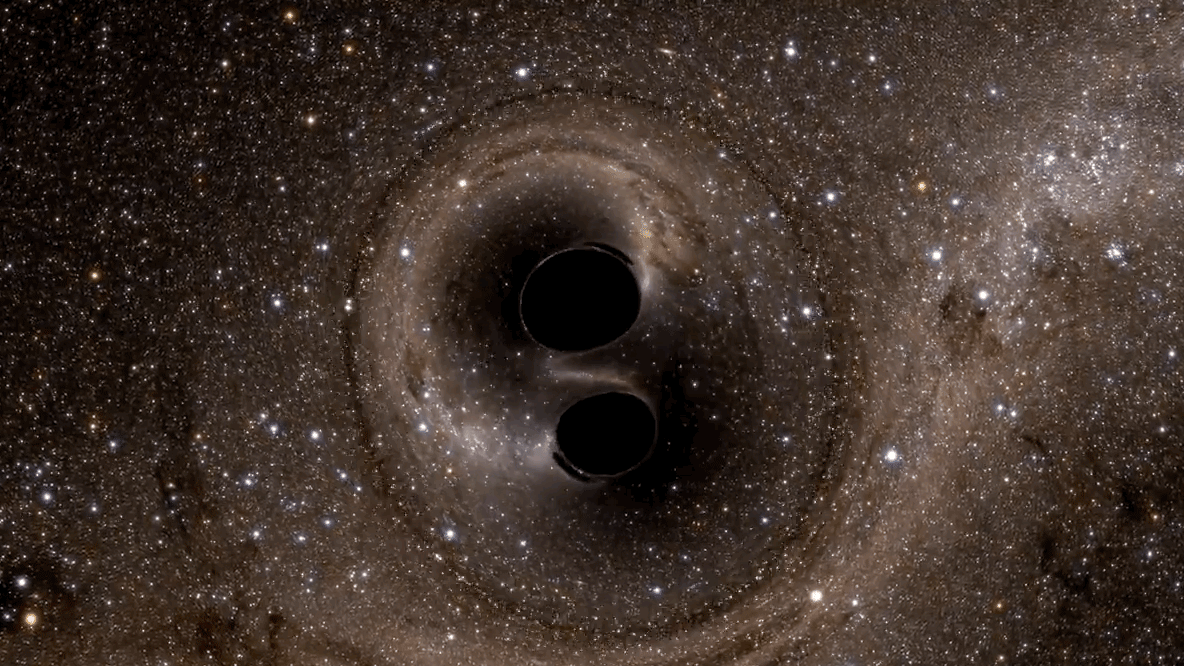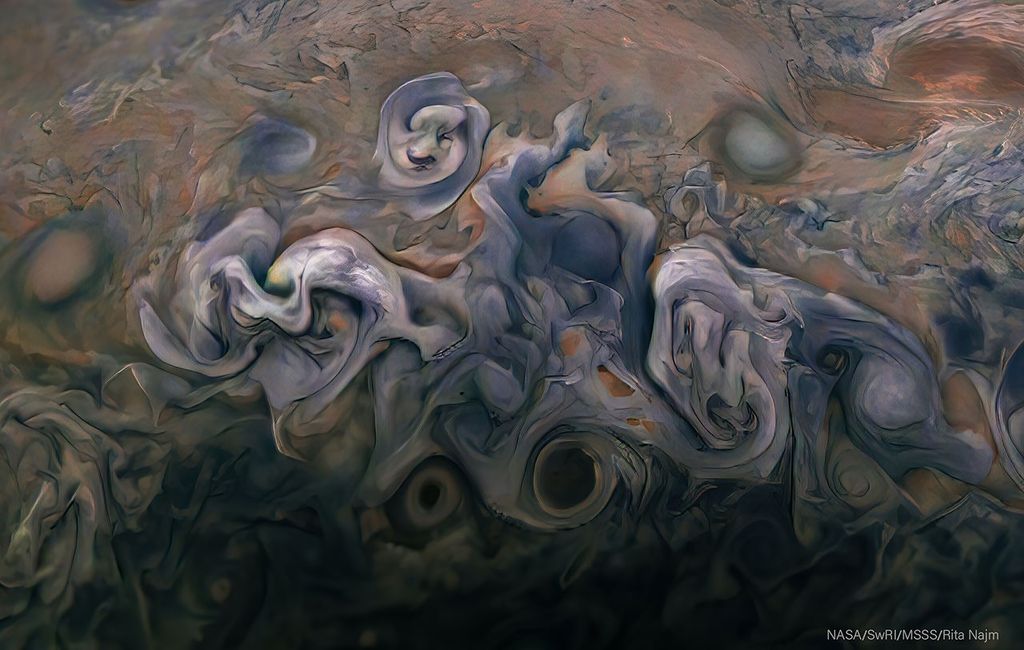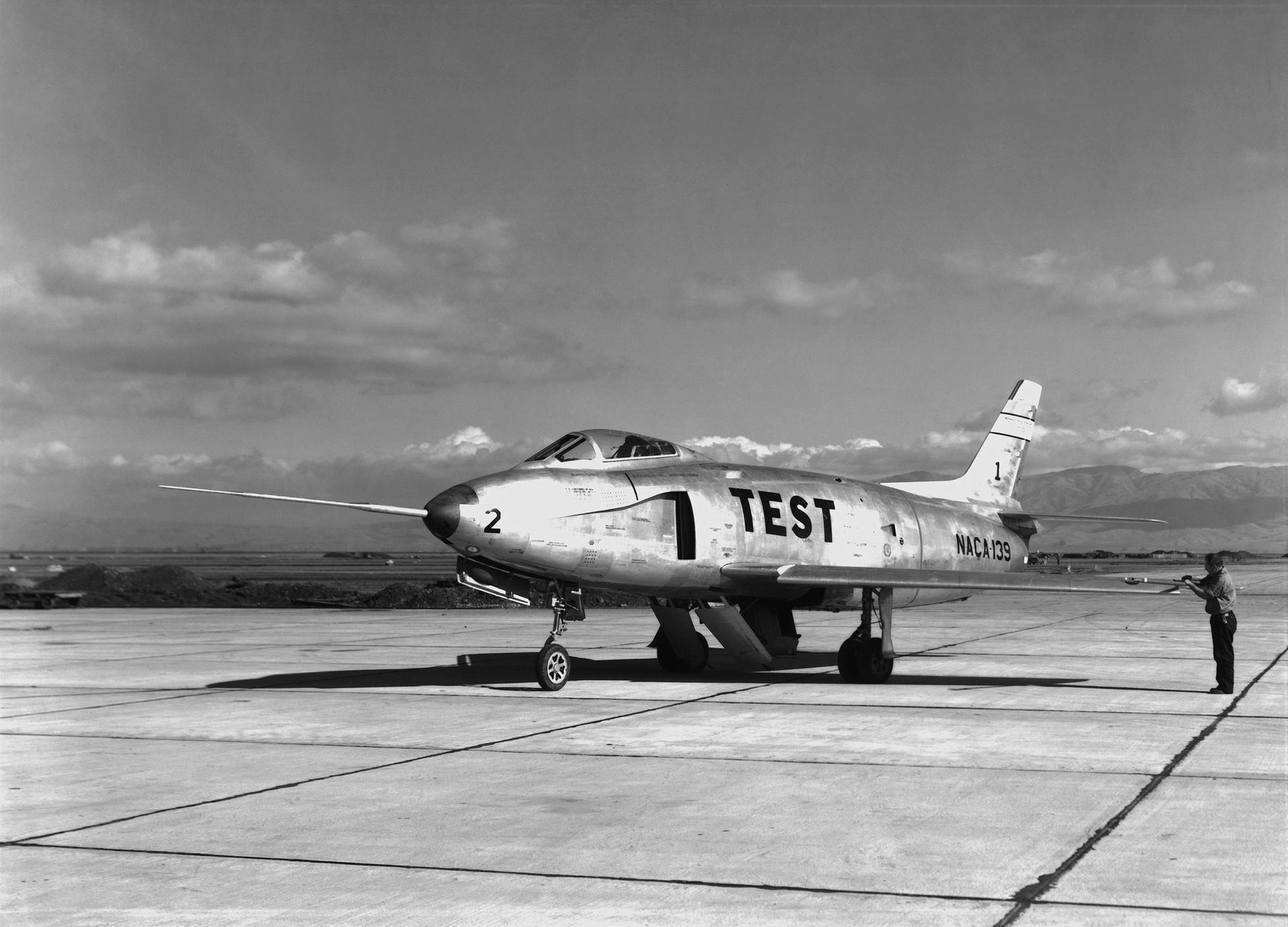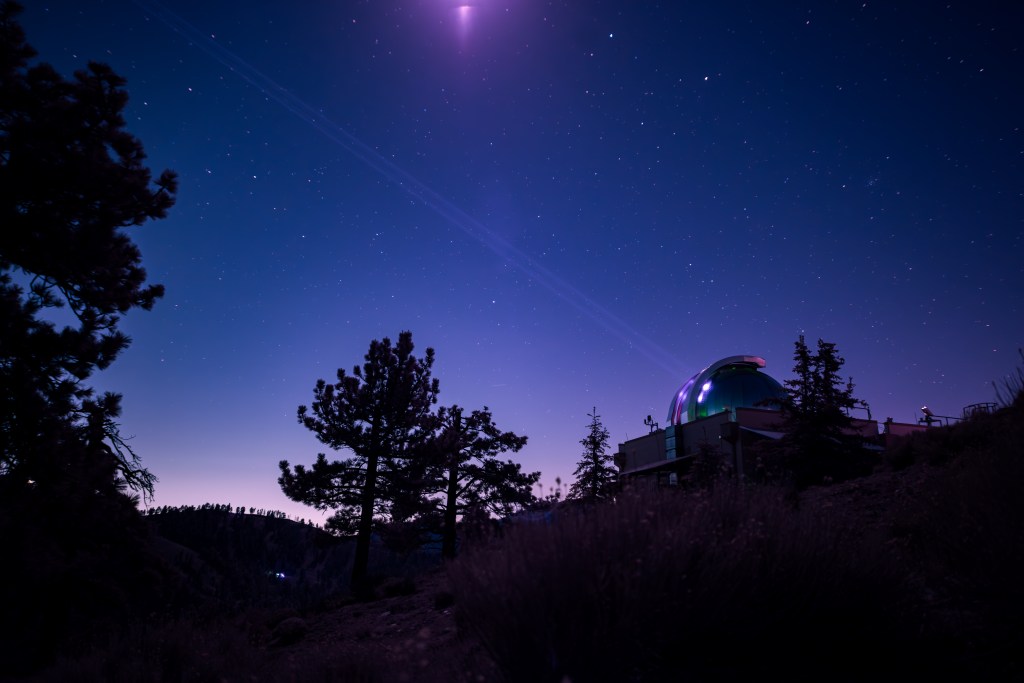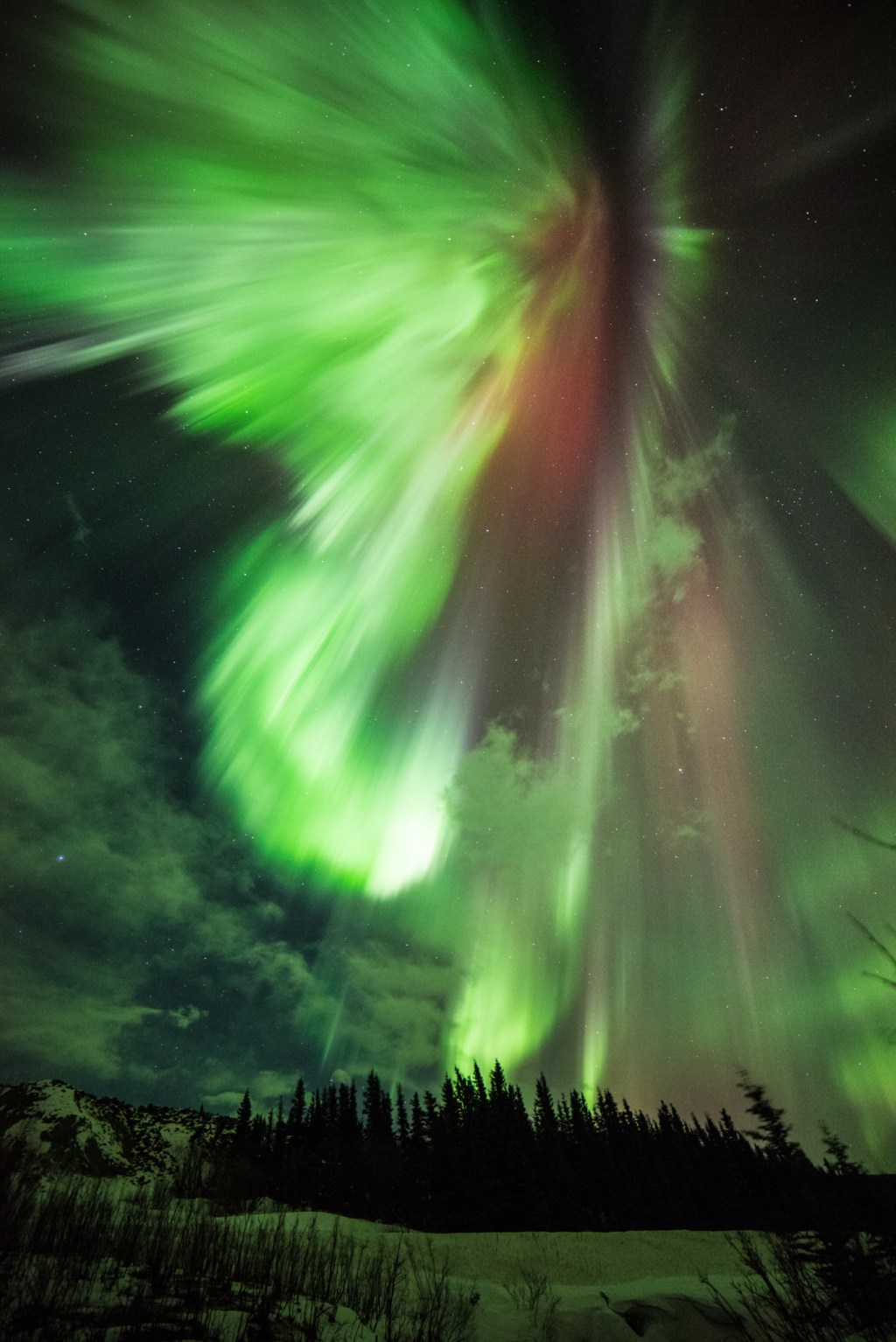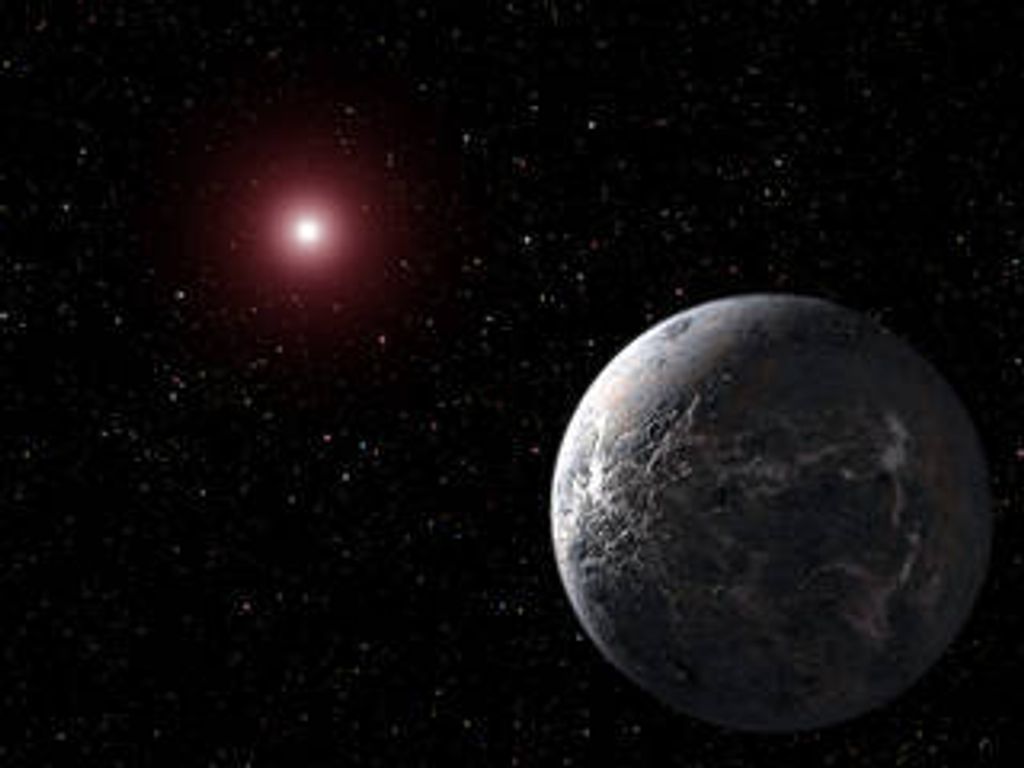1 min read
Comet 2I/ Borisov Near Perihelion

This image taken by NASA's Hubble Space Telescope on Nov. 16, 2019 captures comet 2I/Borisov streaking though our solar system and on its way back to interstellar space. It is only the second interstellar object known to have passed through the solar system.
Comet 2I/Borisov appears in front of a distant background spiral galaxy (2MASX J10500165-0152029). The galaxy's bright central core is smeared in the image because Hubble was tracking the comet. Comet Borisov was approximately 203 million miles from Earth in this exposure. Its tail of ejected dust streaks off to the upper right. The comet has been artificially colored blue to discriminate fine detail in the halo of dust, or coma, surrounding the central nucleus. It also helps to visually separate the comet from the background galaxy.
About the Object
- DistanceDistanceThe physical distance from Earth to the astronomical object. Distances within our solar system are usually measured in Astronomical Units (AU). Distances between stars are usually measured in light-years. Interstellar distances can also be measured in parsecs.At the time of observations, the comet was 2.21 AU from Earth (191 million miles).
About the Data
- Data DescriptionData DescriptionProposal: A description of the observations, their scientific justification, and the links to the data available in the science archive.
Science Team: The astronomers who planned the observations and analyzed the data. "PI" refers to the Principal Investigator.The HST observations include those from programs 16009 (D. Jewitt). - InstrumentInstrumentThe science instrument used to produce the data.WFC3/UVIS
- Exposure DatesExposure DatesThe date(s) that the telescope made its observations and the total exposure time.16 Nov 2019
- FiltersFiltersThe camera filters that were used in the science observations.F350LP
- Object NameObject NameA name or catalog number that astronomers use to identify an astronomical object.Comet 2I/Borisov
- Object DescriptionObject DescriptionThe type of astronomical object.First interstellar comet, near perihelion
- Release DateDecember 12, 2019
- Science ReleaseInterstellar Comet 2I/Borisov Swings Past Sun
- Credit

These images are a composite of separate exposures acquired by the WFC3 instrument on the Hubble Space Telescope. The color results from assigning the color blue to a monochromatic (grayscale) image.

Related Images & Videos

Comet 2I/Borisov Near and at Perihelion
These two images, taken by NASA's Hubble Space Telescope, capture comet 2I/Borisov streaking though our solar system and on its way back to interstellar space. It is only the second interstellar object known to have passed through the solar system. "Hubble gives us the best...

Comet 2I/ Borisov at Perihelion
Hubble revisited comet 2I/Borisov on Dec. 9, 2019, shortly after its closest approach to the Sun where it received maximum heating after spending most of its life in frigid interstellar space. The comet also reached a breathtaking maximum speed of about 100,000 miles per hour....
Share
Details
Claire Andreoli
NASA’s Goddard Space Flight Center
Greenbelt, Maryland
claire.andreoli@nasa.gov

